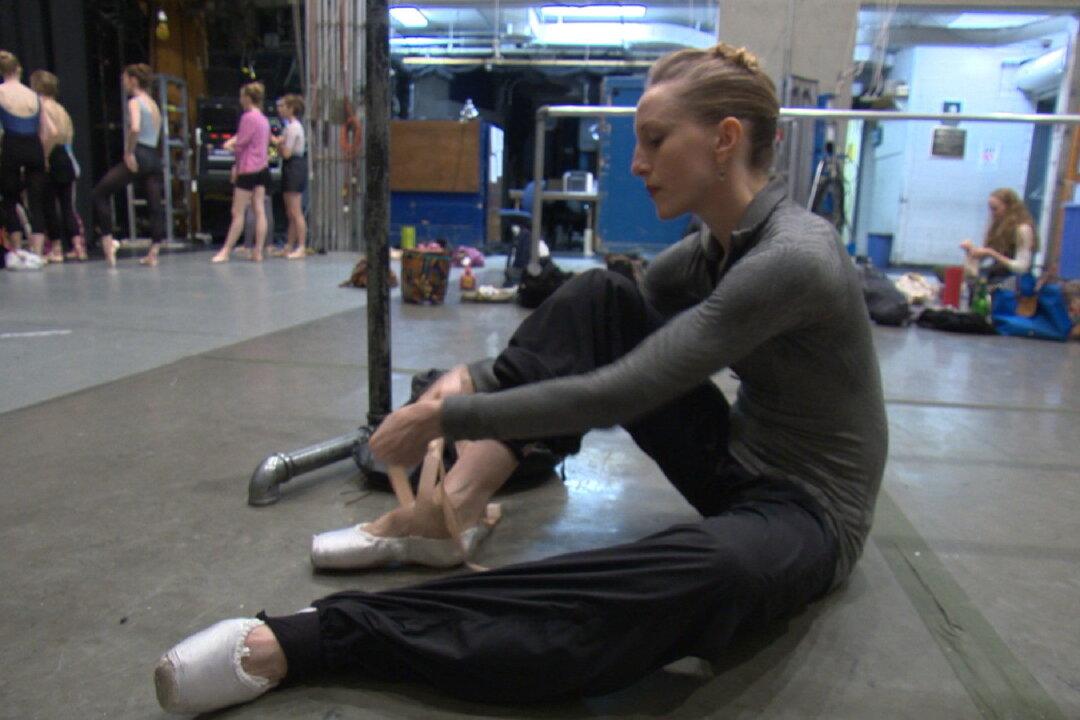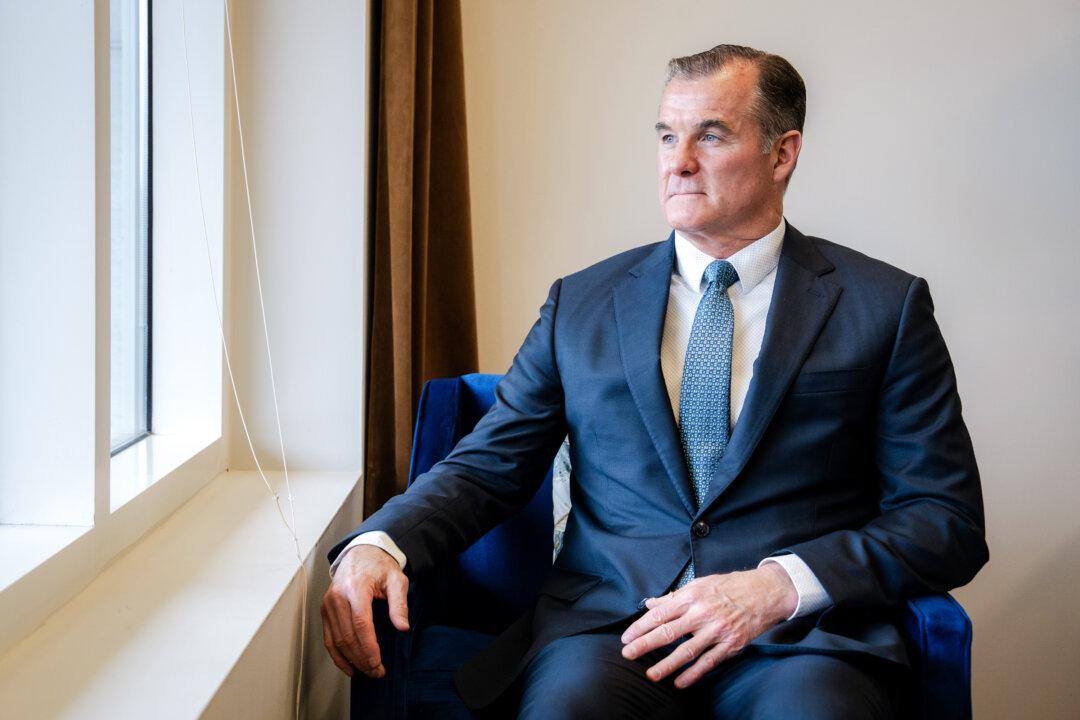NEW YORK—Wendy Whelan, one of America’s most celebrated ballerinas, the definitive contemporary ballerina, the last of a generation, who had joined the New York City Ballet just as Balanchine departed and developed under the guidance of those he hand-picked, had just been told that maybe she shouldn’t dance “The Nutcracker” anymore. Whelan recounted the conversation with Ballet Master Peter Martins, in a documentary interview at her kitchen table.
She was baffled, and he continued: “Well, it’s up to you. I just don’t want people to see you in decline.”
Whelan, at 46, was floored: “I’m in decline?”
Her deep-set eyes almost watery and her expressive face still trying to keep a smile, she continued the tale: For 43 years, she had danced ballet and never had a major injury. That same week after the conversation in 2012, she started experiencing severe pain in her hip. It grew until it got to the point where just moving across the stage put her body in so much pain that it was shocking, she said. She felt the pain was eating her up, stealing what she loved.
It wasn’t until many months later that her doctors discovered there was a complex tear in the elastic tissue on the socket of her hip joint. She eventually made the decision to get surgery so that she would be able to dance again.
Philanthropist Diana DiMenna, a friend, had had the same surgery and gave Whelan her support. “We started talking about what this meant to and for her, not just as a dancer but as a person, as a woman,” DiMenna said on Oct. 10 at Lincoln Center. DiMenna had then had an epiphany: “Someone should be documenting this.”
Whelan—strength, grace, and drama embodied—had an important story to share. DiMenna called documentary producer Adam Schlesinger, who then teamed up with producer Linda Saffire, to capture Whelan’s story. They followed the dancer for a year and a half, with absolutely no idea of where her story would end up, for the documentary “Restless Creature: Wendy Whelan.”
“I did not want to do this,” Whelan said with a laugh after the film’s screening at Lincoln Center, where it premiered during the New York Film Festival. With some reluctance, she had let them follow her to rehearsal. Then to her home. “Then I saw the footage—and the footage was gorgeous.”
Two days later, the whole crew was on a plane to Vail, Colorado, to film the process of surgery. At the time, no one knew whether Whelan would be able to return to dance, and in what capacity.
Fans of ballet are familiar with what happens next, but what the documentary provides is an intimate view into Whelan’s journey of letting go of what she most loved.
Co-director Saffire had been a fan of Whelan’s for 20 years, and she jumped at the chance to document the dancer’s journey. She was a bit apprehensive, of course—meeting your heroes means reconciling the art you love with the person, and the person isn’t always what you imagine, Saffire said. But Whelan was. “She’s magical. Wendy is very giving, very giving of herself, on stage, to you in person, and even now, she is just so giving to us.”
Throughout her career, ballet masters, choreographers, and dance critics have lauded Whelan for being a gift. Co-workers and younger dancers in the film tell us how much Whelan had helped them along. In her 30 years at the New York City Ballet, she has helped foster a culture of kindness.
Early in the film, Whelan tells us she had actually said that if she couldn’t dance ballet she'd rather die. Balanchine girls devote their life to this, she said. It was all she knew.
After falling in love with ballet as a child in Louisville, Kentucky, and then moving to New York City, her life was like living in a fantasy world, in her words, and it wasn’t until she was at the peak of her career—with parts and dances cast and choreographed for her streaming in like gold—that she realized one day that this may pass. What would reality be like when it hit?
Ballet is very much about doing something physical perfectly; it is the art of the pursuit of an ideal, and Whelan wanted so much to do it so well. She was reluctant to consider other forms of dance if she could no longer continue ballet.
We see Whelan come up against the prospect of losing ballet again and again, and the choices she made to keep it in her life. Then we see the ones she makes to let it go. Things that seemed daunting at the beginning of her journey become opportunities.
“Letting ballet go was like peeling off a skin. I was so deep in it,” Whelan, 49, said after the screening. Yet she’s done it with tremendous strength and grace. The story builds up to exclusive footage of a moving farewell performance, a completely new dance made just for her.
“Dancing means everything, everything to me,” Whelan said.
No longer a ballerina, Whelan has since toured the world, collaborating with contemporary choreographers. She ends on a high note, on her own terms, and has made a transition into contemporary dance, where, without the constraints of specific positions and movements, she can still continue to move—beautifully.






